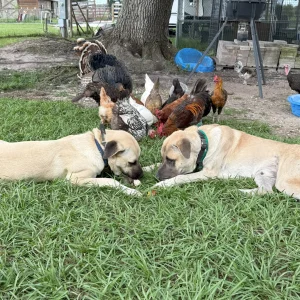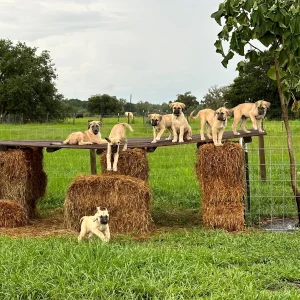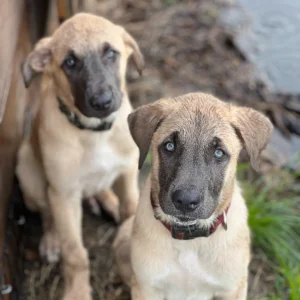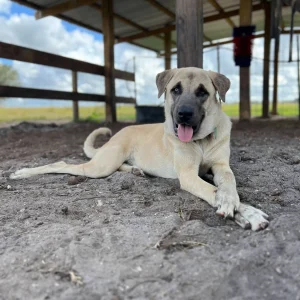At Bee Lovely Farms, our mission is to produce nutrient-dense, pasture-raised beef and lamb through regenerative farming practices that mimic nature and sustain a diverse ecosystem. We are dedicated to nurturing the land and livestock to provide superior quality, environmentally friendly beef and lamb for our community. We aim to inspire others and contribute to a sustainable food system, ensuring a healthy and thriving future for all.
Raised on pasture as nature intended on our regenerative farm. No soy, no corn, no grains, no GMOs, no antibiotics, no steroids, no mRNA.
We take our role as your farmer seriously. All of our animals spend their lives on pasture where they forage, breathe fresh air and enjoy the sunlight. We are committed to providing nutritious and flavorful food from humanely raised animals.
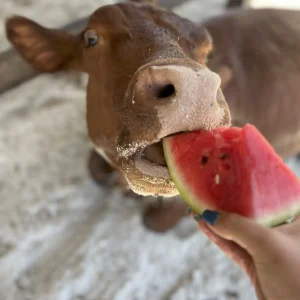
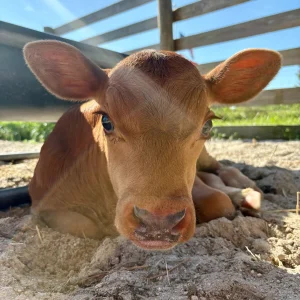
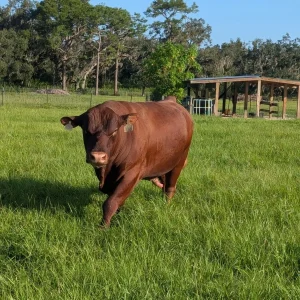


Around 1990, the idea for a breed to suit our changing climate was in the works. Teddy Gentry, of Fort Payne, AL was driven to create the ideal breed to suit the future. The South Poll, a maternal composite combining four maternal breeds: Angus, Hereford, Senepol, and Barzona, is a moderate framed, slick haired cow designed for hot, humid environments. Gentry crossed a Barzona with a Hereford and then a Senepol with a Red Angus, and then these two offspring were bred resulting in what we know today as the South Poll breed. The idea for the South Poll’s origin was based on a desire to combine four maternal Bos Taurus breeds together to form a more heat tolerant animal that had a gentle disposition and tender carcass qualities.
South Polls are red or red and white in color and cows usually weigh around 1,000 to 1,200 pounds. These cows are very maternal and usually have great udders with a high-milking ability. They are also easy fleshing due to their smaller frame and design. This breed has excellent carcass traits and have very lean and tender meat. ~
We decided to build our herd with South Poll cattle, a breed known for thriving on grass, fertility/longevity/maternal traits, calm disposition & heat tolerance. Our journey began with two Jersey heifers from a local, organic, grass-fed raw milk dairy. These girls came with genetics tailored for a grass-only diet, setting a strong foundation for our herd. We then added a full-blood South Poll bull, purchased at just 13 months old, along with several percentage South Poll heifers.
Today, we run a small herd of cows, calves, and our herd sire. With such a tight-knit group, we know each cow and calf’s personality intimately. They interact with us daily, and we’ve learned which ones will eat from our hands and which enjoy a good scratch or rub. Our cattle are gentle by nature, and we maintain a high standard for disposition—any animal that doesn’t meet this standard is culled. So far, every cow and bull has exceeded our expectations for temperament.
Our herd is curious and friendly. They’ll approach us in the pasture, noses twitching, hoping for a treat, and some will even eat directly from our hands. A few cows respond when we call their names—yes, we name our cows! When visitors arrive, our cattle don’t bolt with tails flagged high. Instead, they linger, eager to see what’s going on. A simple call of “Come on, girls!” brings them trotting over. Anyone who claims cows are stupid clearly hasn’t spent time with them.
Katahdin sheep are an American Heritage breed that was developed by Michael Piel of Abbot, Maine. The breed is named for Mount Katahdin, the highest mountain in Maine. Mr. Piel had a flock of several thousand and spent over twenty years cross-breeding sheep to develop the Katahdin breed.
By crossing Caribbean-haired sheep that naturally shed their winter coats with English wooled breeds that had good meat qualities, he developed a composite breed that produced excellent quality meat and required no shearing. Katahdins have proven to be a highly adaptable breed that is in demand throughout the Americas. Farmers like them because of their hardiness and easy care qualities. Consumers like them because of the excellent quality, mild-flavored gourmet lamb they produce.
Characteristics of Katahdin Sheep:
We started our flock in 2021 with two Katahdin ewes and a registered Katahdin ram. Our flock size varies between 10 and 30, maintaining a core of one ram and 6–10 ewes. Our ewes typically birth twins, boosting numbers during lambing season. Each sheep has a name and a friendly personality, with most enjoy neck rubs and garden treats. Watermelon and pumpkin are favorites, so our garden always includes a pumpkin patch and plenty of melons.
We are blessed to live in harmony with the wildlife in our area which includes coyote, bob cat, panther, otter, deer, opossum, skunk and racoon to name a few. However, that wildlife can occasionally pose a risk to our poultry and livestock. Like many other small farmers, we employ an early-warning and protection system known as livestock guardian dogs. Our dogs are Anatolian Shepards.
The Anatolian shepherd is a large livestock guardian dog who hails from the countryside in Turkey. These calm dogs were bred to protect their flocks—sheep, goats, or cattle—on their own, deterring any predators with their big bodies and loud barks.
The Anatolian shepherd is an ancient dog breed whose roots stretch back centuries. They hail from the Anatolia region of Turkey, also referred to as Asia Minor, where they are thought to have developed from a line of shepherds that was bred to protect livestock.
They are the perfect dogs for the task: large and imposing enough to scare predators away from sheep and goats while quick and strong enough to survive an animal attack. They live without a ton of food, and their fur and build are hearty enough to withstand extreme temperatures. They still look after flocks around the world to this day.


